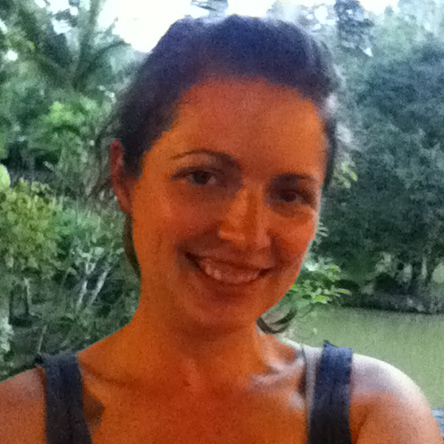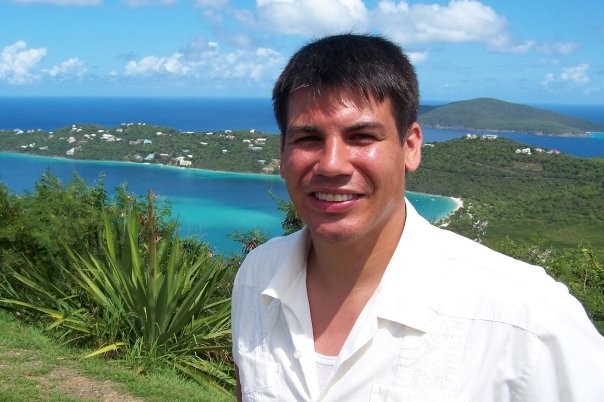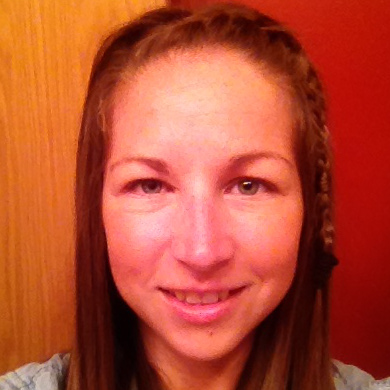Tutoring Programs
Private, In-Home Tutoring in Fairbanks, Alaska
-
Certified Educators
-
Personalized Learning
-
1-on-1 Instruction
-
Flexible Scheduling
-
Bi-weekly Progress Reports
Fairbanks, Alaska Tutoring Programs
Get started with SchoolTutoring Academy's tutoring programs for Fairbanks, Alaska students.
Fairbanks District and Curriculum
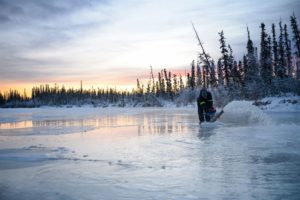 The Fairbanks North Star Borough District (FNSBSD) curriculum conforms to Alaska’s State Content and Performance Standards and Grade Level Expectations (GLEs). The district’s Parent Guide to Elementary Curriculum is a useful resource for helping families understand what students in grades K-6 should know and be able to do in each subject area.
The Fairbanks North Star Borough District (FNSBSD) curriculum conforms to Alaska’s State Content and Performance Standards and Grade Level Expectations (GLEs). The district’s Parent Guide to Elementary Curriculum is a useful resource for helping families understand what students in grades K-6 should know and be able to do in each subject area.
The Fairbanks North Star Borough School District’s math curriculum is designed to build each student’s mathematical content knowledge and reasoning abilities. The curriculum encourages creative and efficient problem solving. High school students are required to complete three core mathematics courses. Courses such as Geometry of Art and Design and Algebra for Technical Careers allow students to select math courses that match their interests and career goals. Advanced Placement courses include AP Calculus, AP Statistics and AP Computer Science.
Science education at FNSBSD is inquiry-based, an approach that engages students in developing questions and using scientific investigation to find answers. From a kindergarten field trip to observe the human impact on the environment to investigating genetic changes in Alaskan fish species in high school, students experience science as a discipline that helps them analyze critical information about the word as they become prepared for college and careers. FNSBSD requires high school students to earn three credits in science. Electives include Alaska Zoology, Natural Resources Technology, Environmental Science, and Physics.
We currently cover the following Fairbanks-area school district: Fairbanks North Star Borough School District.
Schools in Fairbanks include:
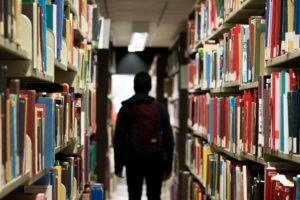 Watershed Charter School is located at 4975 Decathlon Avenue Fairbanks, AK 99709. Watershed covers kindergarten through eighth grade. Contact Watershed at (907) 374-9350. The mission of Watershed Charter School, as stated on their website, is to “promote the development of students with a strong sense of place who will be prepared to serve as stewards of their community. By gaining a working understanding of the history, government, people, places, and ecology of Alaska’s interior, students will be able to expand their competency to the rest of the world. We will teach each child with care, encouraging imaginative work and play, analytical and critical thinking skills, and a sense of social and ecological responsibility. At every opportunity, we will provide students with meaningful explorations and activities outside the classroom that will motivate the children towards academic excellence.”
Watershed Charter School is located at 4975 Decathlon Avenue Fairbanks, AK 99709. Watershed covers kindergarten through eighth grade. Contact Watershed at (907) 374-9350. The mission of Watershed Charter School, as stated on their website, is to “promote the development of students with a strong sense of place who will be prepared to serve as stewards of their community. By gaining a working understanding of the history, government, people, places, and ecology of Alaska’s interior, students will be able to expand their competency to the rest of the world. We will teach each child with care, encouraging imaginative work and play, analytical and critical thinking skills, and a sense of social and ecological responsibility. At every opportunity, we will provide students with meaningful explorations and activities outside the classroom that will motivate the children towards academic excellence.”
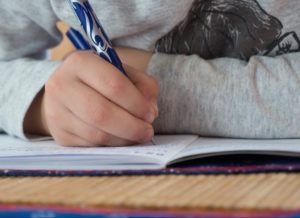 Barnette Magnet School is located at 1000 Barnette Street, Fairbanks, AK 99701. Barnette covers PreKindergarten through eighth grade. Contact Barnette at (907) 465-6072. The main goal of Barnette Magnet school is to offer an “uninterrupted core curricular block, we empower and engage learners through a choice of interactive explorations designed to develop and motivate the whole child, while facilitating a positive connection to the local community. A community where we imagine, explore, create, reflect & celebrate learning.” Additionally, Barnette is a magnet school, which means that it is a public school that offers cutting-edge programs, consisting of small exploration classes, a community-based Friday in Fairbanks program, and quarterly all-school Exhibit Nights.
Barnette Magnet School is located at 1000 Barnette Street, Fairbanks, AK 99701. Barnette covers PreKindergarten through eighth grade. Contact Barnette at (907) 465-6072. The main goal of Barnette Magnet school is to offer an “uninterrupted core curricular block, we empower and engage learners through a choice of interactive explorations designed to develop and motivate the whole child, while facilitating a positive connection to the local community. A community where we imagine, explore, create, reflect & celebrate learning.” Additionally, Barnette is a magnet school, which means that it is a public school that offers cutting-edge programs, consisting of small exploration classes, a community-based Friday in Fairbanks program, and quarterly all-school Exhibit Nights.
 West Valley High School is located at 3800 Geist Road, Fairbanks, AK 99709. West Valley covers ninth grade through twelfth grade. Contact West Valley at (907) 479-4221. The mission of West Valley High School, as laid out on their website, is to “provide an excellent, equitable education in a safe, supportive environment so all students will succeed and contribute to a diverse and changing society. Learn to work and think for life. Our goal is to provide a learning environment where all students develop a strong work ethic along with critical thinking skills in order to be prepared for any path they take in life.” Furthermore, they believe in the ability of all students to learn, success through perseverance and hard work, intervention in student learning in order to improve it, a safe, healthy, and comforting environment aides learning, all staff members are responsible for student learning, a strong sense of community is essential to success, and students learn the best when faced with challenges.
West Valley High School is located at 3800 Geist Road, Fairbanks, AK 99709. West Valley covers ninth grade through twelfth grade. Contact West Valley at (907) 479-4221. The mission of West Valley High School, as laid out on their website, is to “provide an excellent, equitable education in a safe, supportive environment so all students will succeed and contribute to a diverse and changing society. Learn to work and think for life. Our goal is to provide a learning environment where all students develop a strong work ethic along with critical thinking skills in order to be prepared for any path they take in life.” Furthermore, they believe in the ability of all students to learn, success through perseverance and hard work, intervention in student learning in order to improve it, a safe, healthy, and comforting environment aides learning, all staff members are responsible for student learning, a strong sense of community is essential to success, and students learn the best when faced with challenges.
Educating Our Parents: Understanding the Fairbanks District Curriculum
The FNSBSD English/Language Arts curriculum is designed to prepare students to “enter postsecondary life as communicative and insightful citizens and leaders.” Elementary school students learn essential, age and grade-relevant skills in reading, writing, speaking, and listening. In the required 7th grade English course, students take a critical exploration of literature and develop processes for fiction and nonfiction writing. The required 8th grade course advances these skills. Middle school English/Language Arts electives include Journalism and Literature.
High school graduates are required to earn four credits in English/Language Arts. Literature courses focus on American, British and World authors. Literature courses for English Language Learners and Honors students are offered in all four high school grade levels. English/Language Arts electives, such as Sports Literature, Theatre Performance, and Native American Literature are designed to appeal to a range of interests and talents.
Our Fairbanks, Alaska tutoring programs are personalized just for you
Our instructors hail from Harvard, Stanford, Duke and other top institutions
Alaska Tutors
See additional Alaska tutors.
Keeping Informed: Recent Fairbanks Educational News
- Future Foods - Students in the Future Foods class at Barnette Magnet School are going local as they learn about cooking, purchasing, and growing sustainable foods. These class projects are also contributing to students awareness of health, nutrition, eating habits, and other areas of wellness.
- School Lunch Urban Legends - The Fairbanks North Star Borough School District is committed to serving nutritious and tasty breakfast and lunch choices that aid academic achievement and growing children. Get the facts on how FNSBSD makes sure its nutrition services are on target.
- Free Digital Resources, Just a Click Away - The FNSBSD’s Library Media Services department makes it easy to find rich content and skill building resources online. The online collection includes links to Alaska’s Digital Archives, the New York Public Library Digital Collections and virtual reference tools such as World Book Online. Students may access these resources from school or home simply by logging onto the district web site.
Fairbanks Tutors Can Help Your Student Succeed
SchoolTutoring Academy works with young learners and students, all the way up through high school. We offer Pre-K and Kindergarten Tutoring as well as Elementary School Tutoring to build a strong learning foundation early on. We also offer comprehensive tutoring across all school subjects.
About Fairbanks, Alaska
 Fairbanks is a city in central Alaska, and it is the borough seat of the Fairbanks North Star Borough. Fairbanks is the largest city in the interior of the state. Fairbanks is a relatively small city, covering an area of 84.2km2, and housing a population of 32,751. Fairbanks is located merely 196 miles from the arctic circle. Fairbanks is also home to the University of Alaska at Fairbanks, which was the first campus of the University of Alaska system. While there had never been a permanent settlement at Fairbanks prior to the city, there has been evidence of native activity dating as far back as 3,500 years. It is theorized that the activity was limited to seasonal hunting and fishing done by indigenous peoples.
Fairbanks is a city in central Alaska, and it is the borough seat of the Fairbanks North Star Borough. Fairbanks is the largest city in the interior of the state. Fairbanks is a relatively small city, covering an area of 84.2km2, and housing a population of 32,751. Fairbanks is located merely 196 miles from the arctic circle. Fairbanks is also home to the University of Alaska at Fairbanks, which was the first campus of the University of Alaska system. While there had never been a permanent settlement at Fairbanks prior to the city, there has been evidence of native activity dating as far back as 3,500 years. It is theorized that the activity was limited to seasonal hunting and fishing done by indigenous peoples.
The U.S. Census Bureau estimates that the population of 2011 in the city was 32,036 people, 11,075 households, and 7,187 families residing in the city. The population density was 995 people per square mile (366.3/km²). There were 12,357 housing units at an average density of 387.9 per square mile (149.8/km²). The median age of the population was 28 years, with 9.6% under the age of 5, 26.0% under the age of 18, 14.7% from 18 to 24, 32.8% from 25 to 44, 16.4% from 45 to 64, and 7.3% who were 65 years of age or older.
 The Running Reindeer Ranch
The Running Reindeer Ranch
The ranch all began when the current owner’s daughter would beg her parents for a horse, then a goat, and then a sheep. After turning their daughter down countless times, the parents suggested an animal more fit to the harsh arctic climates: the reindeer. With a few years of careful research and planning in conjunction with the University of Alaska Reindeer Research Project, the first reindeer were brought to the ranch in october of 2007. Since then, the family has grown a lot in size. The reindeer love entertaining visitors, nibbling the various lichens, and wandering the boreal forest. The one of a kind and awe striking tour is sure to be the most memorable part of any trip to Alaska, you can even watch the northern lights with the reindeer!
 The University of Alaska Museum of the North
The University of Alaska Museum of the North
The University of Alaska Museum of the North is the only museum in the state with the three-fold mission of research, teaching, and collecting artifacts that relate to northern history and culture. With exhibits including biological, geological, zoological, and cultural collections, this museum is a must see for any and all interested in Alaska and the circumpolar north. The museum has been around almost as long as the University itself. Beginning in 1926, a local naturalist was tasked with travelling Alaska and collecting any and all artifacts to be found. The museum was opened a few years later, in 1929.
 The Fountainhead Antique Auto Museum
The Fountainhead Antique Auto Museum
The Fountainhead Antique Auto Museum is one of the most comprehensive vintage and classic car museums in the United States. They have over 100 carefully restored and preserved cars, in more than 600 fashions ranging from the 18th to the late 20th centuries. They also have plenty of informational exhibits, artifacts, pictures, and videos that tell the story of the automobile.
Interesting Facts
- The founding of Fairbanks can be traced to August 26, 1901 when E.T. Barnette created a temporary trading post on the banks of the Chena River.
- The city was named in honor of Sen. Charles W. Fairbanks of Indiana, who would become the 26th Vice President of the United States from 1905 to 1909 under President Theodore Roosevelt.
- By 1911, Fairbanks was Alaska territory’s largest city, with a population of 3,500.
Chalk Talk: Learning to Learn
 In his 1965 magnum opus, Dune, Frank Herbert wrote “[He] learned rapidly because his first training was in how to learn. And the first lesson of all was the basic trust that he could learn. It's shocking to find how many people do not believe they can learn, and how many more believe learning to be difficult.”
In his 1965 magnum opus, Dune, Frank Herbert wrote “[He] learned rapidly because his first training was in how to learn. And the first lesson of all was the basic trust that he could learn. It's shocking to find how many people do not believe they can learn, and how many more believe learning to be difficult.”
This is an evocative quotation, as many people do view learning as a difficult or unachievable goal. This is even more surprising given the amount of learning required for most jobs these days. For example, software developers can be expected to learn a new programming language or framework in a matter of days! Learning is actually a relatively simple task. First, you must come to understand a piece of information, and then you must come to understand how it fits in with the other information that you already know. The brain uses two distinct modes to do these things, the focused mode and the diffuse mode. In the focused mode, your brain is trying to come to understand some information using conscious thinking, in this mode you might ask yourself, “Why did that happen?” and answer using whatever information comes to mind. In the diffuse mode, your brain works much more subtly. Behind the scenes, your brain is always trying to link information together, and this can give you a much deeper understanding than you could otherwise hope to gain. The understanding of these two modes has lead to a learning technique in which you first survey and prime, which could involve reading a syllabus or scanning a text to get a general idea, then you must observe and example, then you must do it yourself, multiple times, in different contexts. This last step is very important, do not just look at a solution key and assume you can do the same! After doing this, you will have learnt whatever concept in the short term, and then you must simply recall it at regular intervals, lest you lose your newfound skill.


